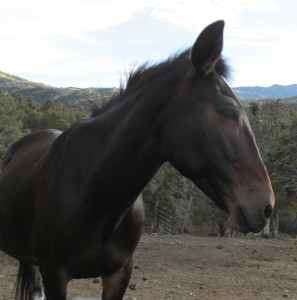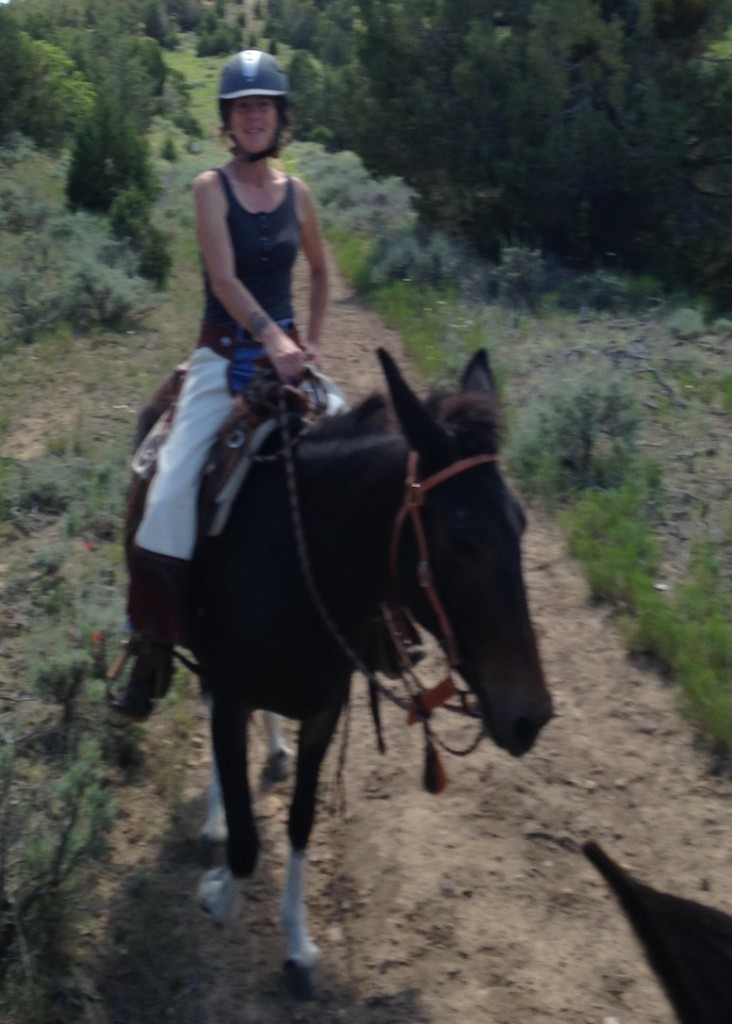Since Sackett’s death, I’ve been more wary of our horses’ wellness, especially when it comes to anything related to possible sand ingestion. Read about sand colic and other forms of colic.
 Over the last month or so, Jolene seemed to be getting bloated. She was eating and drinking well. Her poops were fine. She seemed to be in good spirits. Her heart rate and digestion noises were fine, but at one point I thought I could hear the swooshing of sand when I listened to her gut with a stethoscope.
Over the last month or so, Jolene seemed to be getting bloated. She was eating and drinking well. Her poops were fine. She seemed to be in good spirits. Her heart rate and digestion noises were fine, but at one point I thought I could hear the swooshing of sand when I listened to her gut with a stethoscope.
Yikes.
Sackett had had “shovelfuls of sand,” said my vet when she performed a necropsy. Could Jolene be quietly suffering, too?
Dr. Kate Schoenhals of South Mountain Equine agreed to try to get to the bottom of things while still keeping an eye on our budget.
The Vet Visit
The mule has been challenging to train. So, it wasn’t surprising that Jolene was challenging to medically treat, too. In order to examine her (draw blood, take abdominal x rays, perhaps do a rectal exam) and knowing how difficult she can be, I gave her a full tube of Dormosedan gel 30 minutes before Schoenhals arrived.
It had almost no sedative impact.
When Jolene saw the vet, she became anxious. Kate had given her spring shots, after all. In this mule’s mind, that made her Public Enemy No. 1. (Mules tend to be less forgetful and less forgiving than horses.)
We thought perhaps a less familiar visitor would be more effective. Schoenhals’ vet tech, Shylee, stepped forward to administer IV sedative.
Or not.
Just getting this big, molly mule sedated became a lengthy, three-person challenge that included snubbing, gentle ear-twitching, and crafty vet work. Not coincidentally, she stayed reactive even with an inordinate amount of sedative on board.
Schoenhals took x rays of several aspects of the abdomen and saw no sand to speak of. She drew blood and we later found everything, including liver and kidney function, to be normal. I did not opt for further diagnostic work to rule out enteroliths or cancer, figuring it would be a costly pursuit of discovering something that  we could do almost nothing to remedy.
we could do almost nothing to remedy.
What x rays did show was something I had missed in my worried, colic-focused state: a thick layer of fat.
In hindsight, I noted that her added weight coincided with a new load of good quality hay. This hay replaced a six-month supply of poorer stuff. Mules – as noted by many, including the Baja vaqueros here – can sustain themselves quite well, even on crappy forage. It shouldn’t have surprised me that Jolene would bulk up on good hay. And, since mules tend to carry their chubbiness a bit differently than horses, I had missed what was staring right in front of me.
Marching orders were clear: more exercise!
(Orders also could have included less hay, but that’s a management hurdle when Jolene is fed with herd mates. Separating them would mean more work for me, more stress for her.)
I had been riding Jolene about twice a week. Now, we ride about four times a week. She also might hike with me and the dogs, or come along as a ponied mule. Slowly, she’s trimming down.

Love the harmless outcomes, even after earning more grey hairs with the concern/worry. Yeah (:-)
Enjoy the additional time in the saddle,
Carrie
You bet, Carrie! Considering the alternatives, we’re definitely not complaining.
We love your equestrian blog! Why not come and post it at Haynet, an equine blogging network for more to follow? Come and visit us at http://www.hay-net.co.uk